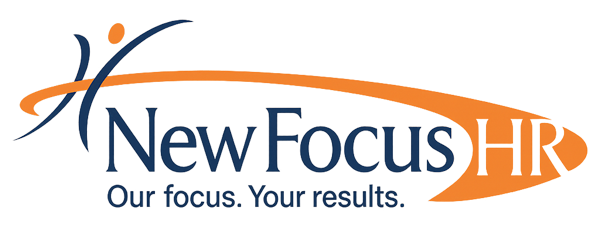Promoting Civility in the Workplace and Problem Resolution
Lately, employers are struggling with keeping the workplace civil. With employees having differing views and opinions on everything from politics to pay, the workplace may be experiencing some semblance of incivility. So, how do employers help promote a civil workplace for all?
Civility in the workplace is defined as treating others, meaning colleagues and coworkers, with respect, dignity, and consideration. It involves small actions like smiling, saying hello, and listening fully. It also includes:
- Being respectful of colleagues and coworkers’ opinions, even if you disagree.
- Managing conflict in a respectful way.
- Showing appreciation for others’ contributions.
- Refraining from behavior that may be perceived as rude or aggressive.
- Practicing active listening and empathy.
- Communicating constructively.
Obviously, incivility is the opposite of civility and in the workplace is a form of disrespectful behavior that violates workplace norms of mutual respect. It is defined as low-intensity and deviant behavior that is rude, discourteous, and lacks regard for others. It is different from psychological aggression, which involves clear intentions to harm a colleague or coworker. Incivility may include:
- Belittling colleagues and coworkers.
- Pointing fingers at mistakes of colleagues and coworkers.
- Taking credit for colleagues and coworkers’ work.
- Being unresponsive to colleagues and coworkers.
- Not acknowledging colleagues or coworkers’ presence.
- Answering questions in a curt manner.
- Making a negative face in response to what colleagues or coworkers say.
The Society for Human Resource Management (SHRM) in their Political Conversations Playbook, A Guide for Navigating Political Dialogue for Enhanced Learning and Understanding the Workplace, and 5 Steps for Encouraging Civil Conversations at Work, offers five clear and actionable steps to turn tough talks into teamwork, discord into dialogue, and conflict into opportunity, ultimately setting teams up for success.
- Step #1 – Educate Yourself – Equip yourself with knowledge and understanding of the current state of civility and incivility in both the workplace and society at large.
- Step #2 – Establish a Shared Understanding of Civility – Employers should work with their employees to come up with a shared mental model. Making sure that everyone agrees on civil and uncivil behaviors, assists with communicating and resolving disagreements in a more effective manner.
- Step #3 – Identify Norms for Mutual Respect – After developing a shared understanding among employees, establish norms that will define how employees interact, communicate, and resolve conflicts in a civil manner. The norms are specific behaviors that everyone in the organization must follow.
- Step #4 – Promote a Culture of Civility – Once shared definitions of civility and norms are established an employer and employees may actively cultivate civility within the work environment. Now, the culture reflects employee expectations of how leadership and managers utilize policies, procedures, and practices to maintain a respectful and civil workplace. The norms are expected from everyone within the organization.
- Step #5 – Become a Catalyst for Civility – Remember that this is not a one-time event, but must be an ongoing process in order for it to be recognized by all employees as a norm and expectation in the workplace.
Once the norms for civility have been established, how do employees report when they still have issues? A solid problem resolution process will help. However, many organizations don’t have a problem resolution process in place where employees are able to discuss their concerns regarding incivility, or for that matter, any other issue that may be bothering them. Some organizations promote an “open door” policy where employees are able to engage with leadership to discuss their concerns, but many organizations don’t follow up on these concerns, or take action. So, having a well-defined problem resolution policy that includes follow-up and action, in an employee handbook is always recommended. We at New Focus HR, always suggest that employers implement a problem resolution policy similar to the following:
Any employee who has a question, issue, or complaint with the organization should follow these steps:
It is the policy of our organization to ensure that employees who have questions, issues, and complaints arising from misunderstandings and the application of policies, procedures, and work rules be promptly heard, answered and action taken to resolve or clarify each situation.
- Employees should talk with the individual with whom they have an issue to try and come to a resolution of the problem or situation.
- If talking with the employee does not satisfy the problem or situation, or if the employee alternately chooses to initially submit a problem for resolution, then the employee should contact their Department Head, or the Human Resources Department, to discuss the problem or situation, as soon as possible.
- If the problem or situation is not satisfactorily resolved or the problem or situation is with their Department Head, the employee should contact the Human Resources Department directly. The Human Resources Department may engage with the COO, CFO, or CEO/President to assist with resolving the issue.
- If the problem or situation is not satisfactorily resolved or the problem or situation is with the Human Resources Department, the employee may request a meeting with the COO, CFO, or the CEO/President to discuss the issue or complaint. The CEO/President’s decision will be final and will end the problem resolution process.
- If the problem is with the CEO/President the COO, or CFO must notify the President of the Board of Directors.
- If needed, the Board of Directors may be consulted to come to a final resolution on all employee-related matters.
Throughout each step, the higher-level management employee, or the Human Resources Department should document what actions have been taken to date and any required follow-up actions with expected dates that need to be completed in the future.
Employees seeking additional information about problem resolution may contact their Department Head, or the Human Resources Department.
Job titles in the above policy may be edited, as needed, for each organization. However, reporting relationships should be consistent with the internal chain of command within the organization.
So, how do employers promote civility in the workplace? They need to make sure that they are identifying the cultural norms and behaviors that they expect from all employees and then put in place a problem resolution process to make sure that employees have a way to communicate and/or report when they are experiencing issues in the workplace. By doing so, they will improve employee morale, build a better team of employees, enhance working relationships, have greater employee job satisfaction, reduce sick leave and turnover, and prevent harassment and violence in the workplace. These are all things that every employer wishes to promote in their workplace.
For additional information on civility and problem resolution in the workplace, please contact us at www.NewFocusHR.com.
Written By: Kristen Deutsch, M.B.A., CCP
President
11/21/2024



